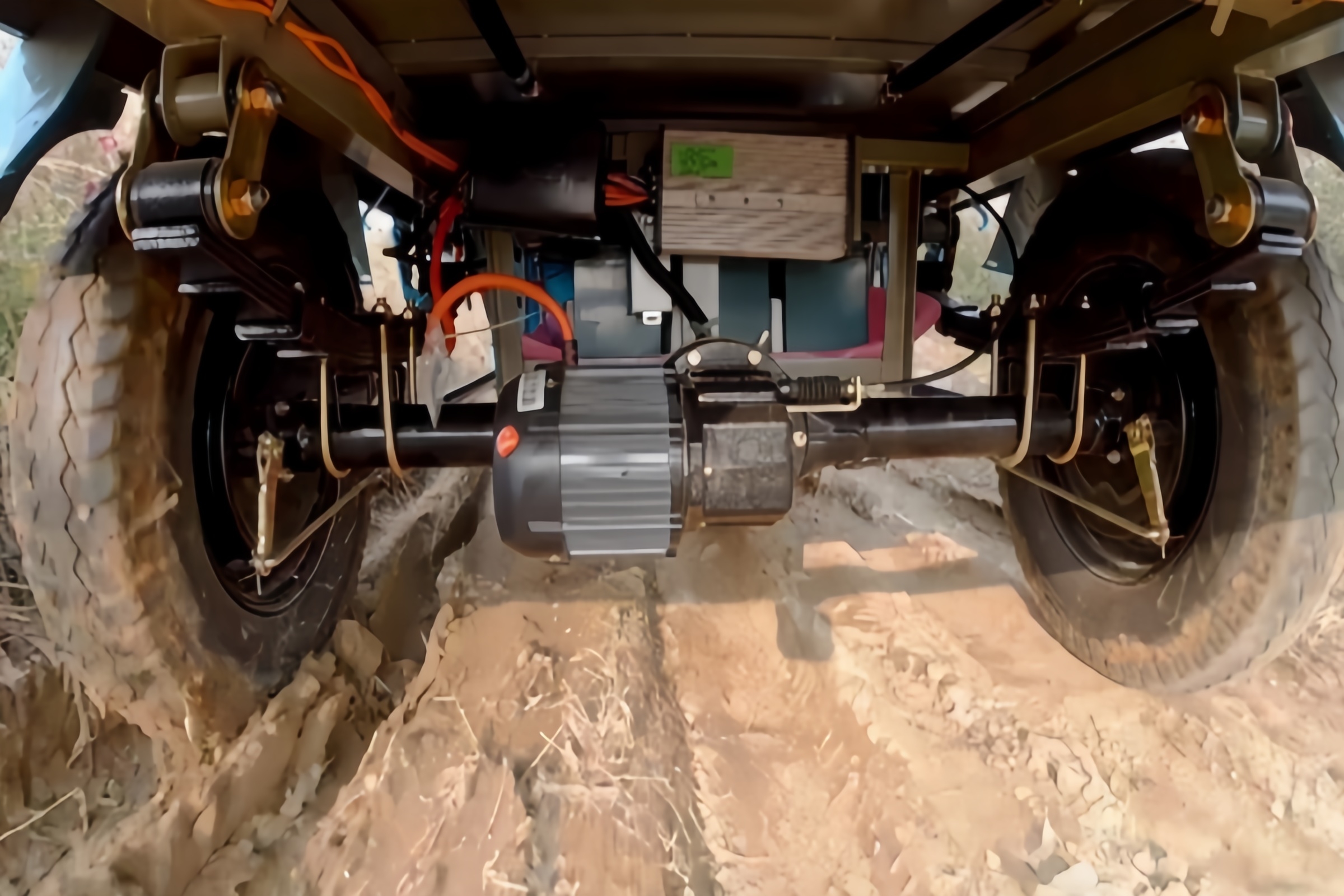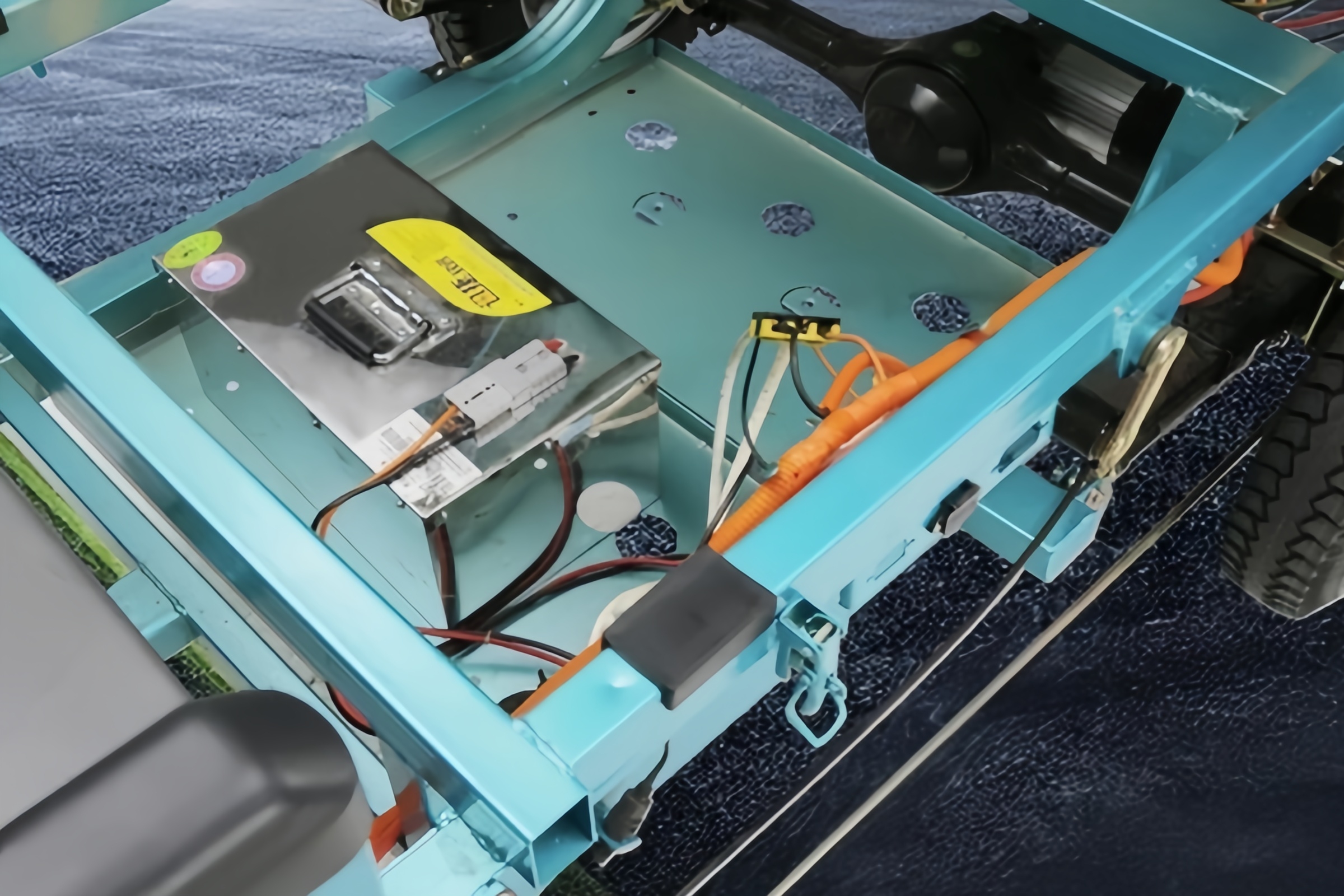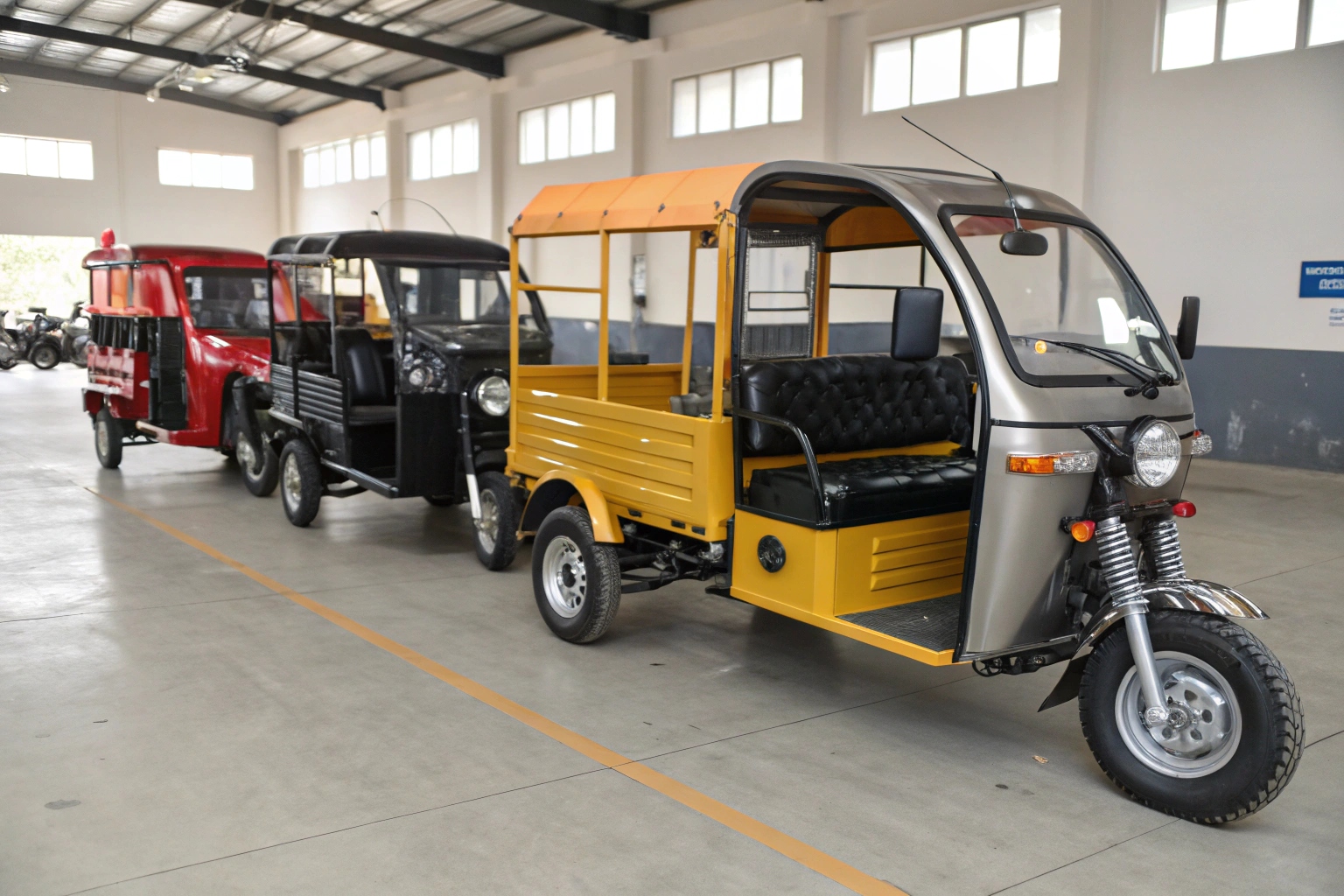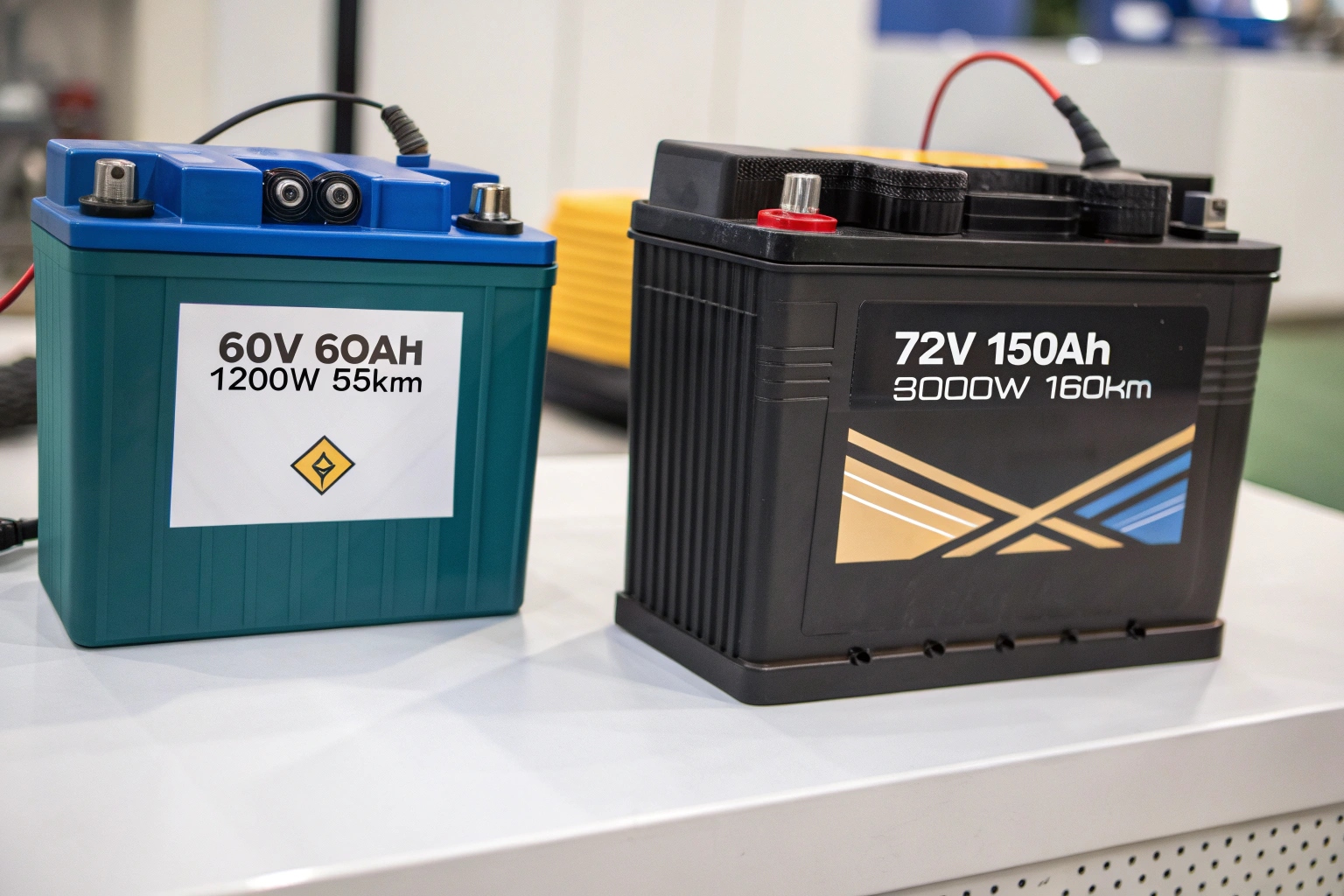Your brand new electric tricycle has a powerful motor, but the battery dies halfway through your workday. Now you're stranded, losing time and money because the power system is completely unbalanced.
To get the best performance, you must match the motor's power (W) with the battery's voltage (V) and capacity (Ah). This ensures the tricycle has the strength for its job and the energy to last, preventing poor range and component damage.

As a factory, we see this issue a lot. An importer wants the biggest motor but pairs it with a small, cheap battery to save money. This never works. The motor and battery are a team. They have to be balanced to deliver the performance you need, whether you are carrying passengers, cargo, or running a food cart. Let's look at how to get this pairing right.
Why Must the Motor and Battery Be Matched in Electric Tricycles?
Your powerful new motor feels sluggish, and the battery gets unusually hot. The mismatched system is inefficient, costing you in performance and likely heading for an early failure.
An unmatched system creates a bottleneck. A weak battery can't supply enough current to a powerful motor, leading to poor performance and overheating. A large battery paired with a weak motor is just wasted weight and money.

Think of it like a water pipe. The battery is your water tank, and the motor is the faucet. If you have a huge faucet (a powerful motor) but a tiny pipe (a weak battery), you'll only get a trickle of water. The battery simply cannot deliver the energy fast enough, which strains it and shortens its lifespan. The controller is the brain in the middle, managing this flow of energy. If the components are not designed to work together, the controller will limit the power to protect the battery, so you never get the performance you paid for. A properly matched system ensures that the motor can draw the power it needs, the controller can manage it safely, and the battery can supply it without being damaged. This gives you efficient power, reliable range, and a longer life for your investment.
What Motor Sizes Are Commonly Used in Different Electric Tricycles?
You don't know if your business needs an 800W or a 3000W motor. Choosing wrong means you either overpay for power you don't need or buy a tricycle that's too weak for the job.
Motor size depends entirely on the tricycle's job. Light passenger scooters use 500W-1000W motors, most cargo models use 1000W-1500W, and heavy-duty agriculture, taxi, or specialized tricycles require powerful 2000W to 4000W motors.

At our factory, we configure powertrains every day based on how our clients will use their vehicles. You don't use a sledgehammer to tap in a small nail. The same logic applies here. A small motor is more efficient for light tasks, while a big motor provides the raw torque needed for heavy loads and steep hills. I always ask my partners to describe their daily work, and from there, we can recommend the perfect motor size. Based on thousands of orders, here are the most common configurations that we know work in the real world.
| Vehicle Type | Typical Use & Load | Recommended Motor Power (W) |
|---|---|---|
| Passenger Tricycle Scooter | 1-2 passengers | 500W - 1000W |
| Electric Cargo Tuk-Tuk | Up to 800 kg cargo | 1000W - 1500W |
| Tricycle Van / Food Cart | Local delivery, mobile vending | 1000W - 1200W |
| Garbage Tricycle | 2-6 bins, some with lifts | 1000W - 4000W |
| Agriculture Tricycle | 1 ton+ heavy loads | 2000W - 2500W |
| Electric Tuk-Tuk Taxi | Passenger transport, city use | 3000W - 4000W |
Which Battery Specifications Best Fit Each Electric Tricycle Motor?
You have the right motor, but your tricycle's range is terrible. You chose a battery with the wrong voltage or not enough capacity, so you can't complete your daily route on a single charge.
The best battery has the correct system voltage (e.g., 60V or 72V) and enough capacity (Ah) to power your motor for your desired range. A 1200W motor might need a 60V 60Ah battery for a 55km range, while a 3000W motor needs a 72V 150Ah battery for 160km.

After you have chosen your motor, it's time to select its partner: the battery. Voltage (V) must match the motor and controller system. Capacity, measured in Amp-hours (Ah), determines your range. More Ah means more range. It's that simple. Powerful motors draw more current, so they need higher-capacity batteries to achieve a good range. Below is the standard list of lithium battery options we offer at our factory. It shows how we match battery specifications to motor power to get a reliable reference range. The range is a guide for normal conditions; heavy loads or steep hills will reduce it.
| Battery Specification (V/Ah) | Suitable Motor Power (W) | Reference Range (km) |
|---|---|---|
| 48V 35A | ≤800W | ~30 km |
| 48V 60A | ≤1000W | ~45 km |
| 60V 35A | ≤1000W | ~35 km |
| 60V 60A | ≤1200W | ~55 km |
| 60V 80A | ≤1500W | ~90 km |
| 60V 100A | ≤2000W | ~110 km |
| 60V 150A | ≤3000W | ~145 km |
| 60V 200A | ≤3000W | ~185 km |
| 60V 300A | ≤4000W | ~270 km |
| 72V 35A | ≤1000W | ~40 km |
| 72V 60A | ≤1200W | ~60 km |
| 72V 80A | ≤1500W | ~95 km |
| 72V 100A | ≤2000W | ~120 km |
| 72V 150A | ≤3000W | ~160 km |
| 72V 200A | ≤3000W | ~190 km |
| 72V 300A | ≤4000W | ~290 km |
How Can Buyers Select the Right Motor-Battery Setup for Their Business?
You understand the technical details, but you're still not sure what to order. You are worried about making a costly mistake on your first big shipment of electric tricycles.
First, define your daily requirements: the maximum load you will carry and the total distance you will travel. Then, discuss these needs with your factory supplier to choose a pre-tested, balanced motor and battery combination that fits your business.

The best way to choose is to stop thinking about abstract watts and amp-hours. Instead, think about your real-world job. When a new B2B client contacts me, I don't start with a list of motors. I start with simple questions that get to the heart of what they really need to succeed in their market.
- What is your primary use case? Are you delivering packages tricycle van, transporting people electric tuk tuk taxi, or hauling crops agriculture tricycle? The job defines the vehicle type.
- What is the heaviest load you carry regularly? Be realistic. This will determine the motor power needed. An 800kg load needs a 1500W motor, period.
- How many kilometers do you drive in a single day? This is the most important question for choosing the battery. Always add about 20% extra to your daily distance to account for heavy loads, hills, and battery aging.
- Describe your terrain. Is it flat city streets or steep rural hills? Hills require more torque, which might mean a more powerful motor or a special controller and axle setup.
Once we have these answers, selecting the right setup from our list is easy. We have tested these combinations for years and know they work.
Conclusion
Matching your motor and battery is crucial for performance. Define your load and range needs first, then select a balanced powertrain to ensure your electric tricycle is a reliable tool for your business.

